Part Time Course
Monday and Thursday Afternoons
USA, Eastern Time Zone, 9am -12.30am
UK, Time Zone, 2pm – 5.30pm
Total of 40 weeks of tuition
Deposit = £200
Cost = £975 per term (3 terms per course)
Limited to 10 Students
£200.00
7 in stock
Part Time Course
Monday and Thursday Afternoons
USA, Eastern Time Zone, 9am -12.30am
UK, Time Zone, 2pm – 5.30pm
Total of 40 weeks of tuition
Deposit = £200
Cost = £975 per term (3 terms per course)
Limited to 10 Students
7 in stock
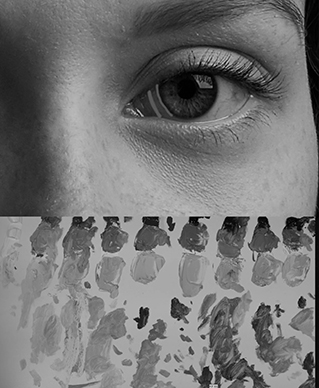
Afternoon Online Portraiture Painting Course 2024/2025
Afternoon online classes to accommodate international students as well as U.K. students who cannot join morning classes. Before starting the course, we will run a few mock-up lessons to make sure that everything is set up well and runs smoothly.
Take your skills to the next level this year and learn the traditional techniques of classical realist art. The portrait painting course will teach you tried and tested methods going back to the Renaissance.
The course is now split into two half-day classes of 3.5 hours per class. Dividing the class into two days is more manageable for students’ energy levels. Students get to check in twice a week which can help to keep them on the right path with their course work.
Cost
£975 per term (3 terms per course)
Deposit
£200 and the remaining balance of £775 is to be paid 3 weeks before the start of the Academic Year. Details will be sent in the confirmation email.
Timetable
One year academic studies 2024-2025.
Monday and Thursday Afternoons
USA, Eastern Time Zone, 9am -12.30am
UK, Time Zone, 2pm – 5.30pm
Total of 40 weeks of tuition
Terms
1st Term
12th Sep – 17th Oct | Half Term | 28th Oct – 19th Dec 2024
Christmas Break
2nd Term
2nd Jan – 6th Feb | Half Term | 17th Feb –10th April 2025
Easter Break
3rd Term
21st April – 22nd May | Half Term | 2nd June – 17th July 2025
Colour
The Online Portrait Painting Course is divided into two parts. The first part is Tone, the second part is Colour. The second part of the programme will focus on the theory and practical application of colour. We will be exploring the Full Colour Palette which lends itself well to the Alla Prima style of painting, giving it a fresh vibrant look.
The study of masterpieces is the quickest way to develop a visual vocabulary. During this term we will be looking at some of the modern masters of the Alla Prima technique to help us deal with the complexities of the full palette.
Through studying the masters and applying what we have learned we can start to develop our own style as a portrait artist.
Tutor
Louis Smith is a classically trained portrait painter who studied in Florence for three years. A painter of bespoke portraits he undertakes various commissions ranging from individuals through to families and professionals. To see some examples of his work go to louissmithart.com
Daily Schedule
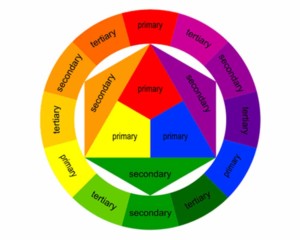
Lesson
Lesson = Understanding Colour. Hue, chroma and value explained. Deeper knowledge of complimentary colour and colour temperature.
Exercise = Colour wheel, mixing secondary and tertiary colours from primary colours. Mixing flesh tones, high chroma – low chroma, warm and cool.
Model = No Model.
Homework = Practice colour mixing exercises.
Outcome
Students will learn:
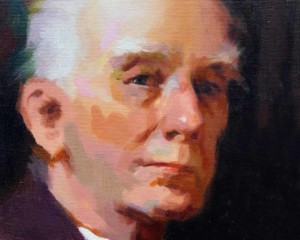
Lesson
Lesson = Richard Shmid is a modern day master of Alla Prima portraits, the aim of this study is to emulate his loose high chroma style.
Exercise = Study a Richard Schmid portrait painting observing the use of colour, strokes and accuracy.
Model = Apply what we have learned with the Model.
Homework = Study Richard Shmid Portrait. Paint a portrait in similar style either sitter or photo reference.
Outcome
Students will learn:
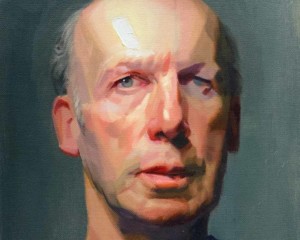
Lesson
Lesson = This Lesson is designed to push the boundaries of colour by assimulating Richard Shmid’s approach to capturing the variety of colour in the face.
Exercise = Study observing the local colours of the face and exaggerated colour mixing.
Model = Referance of Paul.
Homework = Repaint the study to see how much you remember.
Outcome
Students will learn:
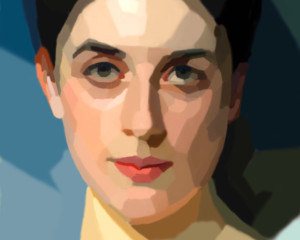
Lesson
Lesson = John Singer Sargent master copy. Now we are starting to refine the colours of the face by copying Sargents lower chroma colours.
Exercise = Break down the portrait in to simple planes of hue, chroma and value used by Sargent
Model = Lady Agnew portrait.
Homework = Repeat the exercise with another master copy.
Outcome
Students will learn:
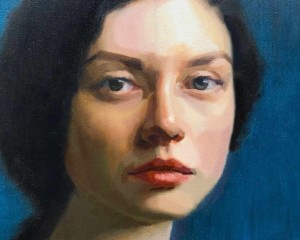
Lesson
Lesson = This lesson is designed to observe and describe the subtlety of colour and tonal relationships by assimilating Sargents approach.
Exercise = Lower the chroma and maintain the planes to describe the form of the face.
Model = Reference of a young girl..
Homework = Repeat the exercise.
Outcome
Students will learn:
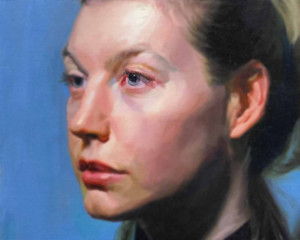
Lesson
Lesson = Softening edges, still observing the planes of the face but refining the variety of edges as when rendering each plane.
Exercise = Observing the variety of edges of each plane ranging from sharp to soft.
Model = Using a portrait model and reference.
Homework = Work on the portrait in their own time.
Outcome
Students will learn:
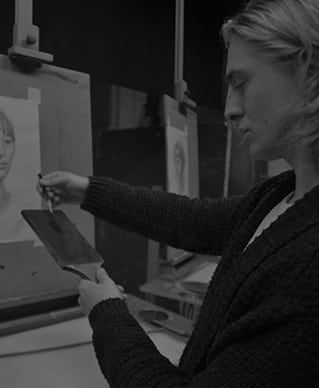
Tone
The tone part of the Online Portrait Painting Course is divided into two parts, drawing and tone.
Drawing
The secret to a successful painting is measuring tone and colour in that order.
First we start with the Sight Size technique which is copying the reference like for like. Once we are comfortable with this measuring technique we then progress to comparative measurements based on proportional units of measurement, this method is used when observing the model from a distance.
Tone
The next step is tone, we will be learning how to observe and describe 3-dimensional form without the distraction or complexity of colour.
Simplification is key, we start by using the model of the Asaro head as an armature to break down the features of the face into simple geometric planes. Training the eye to accurately compare the tonal relationships of each plane is crucial to painting a convincing portrait.
All images of the Online Portrait Painting Course are taken from Louis Smiths demonstrations when delivering each lesson.
Daily Schedule
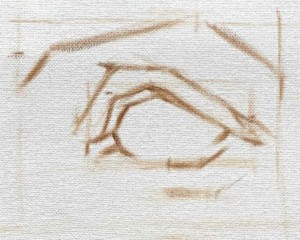
Lesson
Lesson = Students learn how to measure using the Sight Size method, learning how to map the features of the face.
Exercise = Students work from Charles Bargue master copies, then apply this method to the drawing of each feature.
Model = Charles Bargue master copies and photo references of the features.
Homework = Articulate the features of the face.
Outcome
Students will learn:
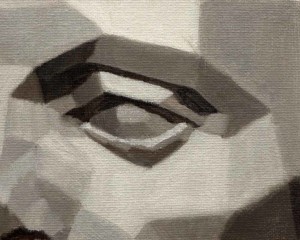
Lesson
Lesson = We will be using the Asaro head as an armature to simplify the features into geometric planes.
Exercise = Learning how to observe and describe form using a step by step process.
Model = Asaro Eye, nose and mouth reference.
Homework = Repeat the steps in class.
Outcome
Students will learn:
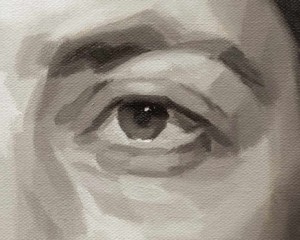
Exercise = Breaking down the form of the eye, nose, mouth and ear into simple planes.
Model = Eye, nose, mouth and ear references.
Homework = Repeat the steps in class.
Outcome
Students will learn:
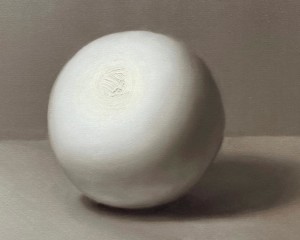
Lesson
Lesson = Understanding the anatomy of light, breaking down the form into its separate tones of highlight, halftone, shadow and cast shadow.
Exercise = Follow the steps listed to illustrate the form of a sphere.
Model = Polystyrene, ball, square and cylinder.
Homework = Repeat the steps in class to illustrate the form of a cylinder.
Outcome
Students will learn:
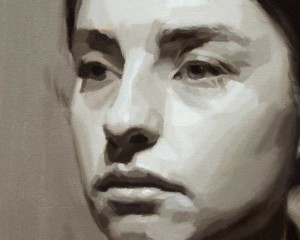
Lesson
Lesson = Put all the main features together to form the triangle of the face. An accurate portrayal of the eyes nose and mouth is important to produce a recognisable face.
Exercise = Working big to small, starting with overall form of head then the features.
Model = Photo reference.
Homework = Practice this technique by painting the head from a different angle.
Outcome
Students will learn:
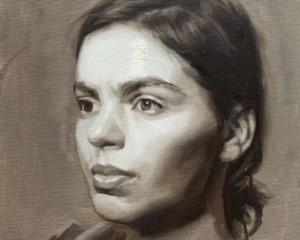
Exercise = Follow the 23 step guide.
Model = Photo reference.
Homework = Repeat all the steps with a different reference photo.
Outcome
Students will learn:
There are no reviews yet.
Be the first to review “Afternoon Online Portraiture Painting Course 2024/2025”
You must be logged in to post a review.